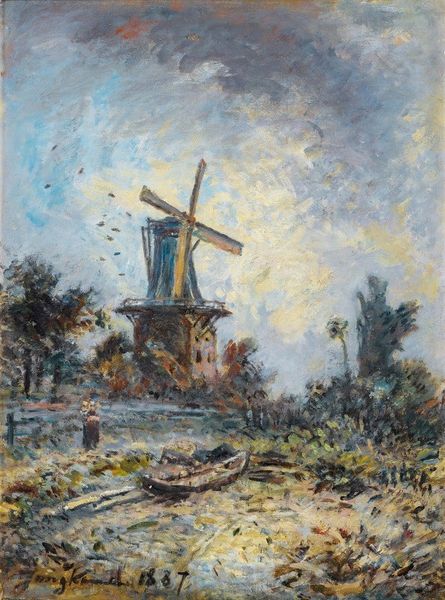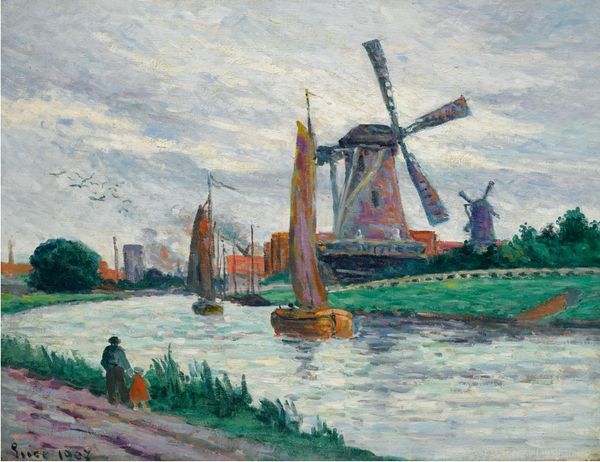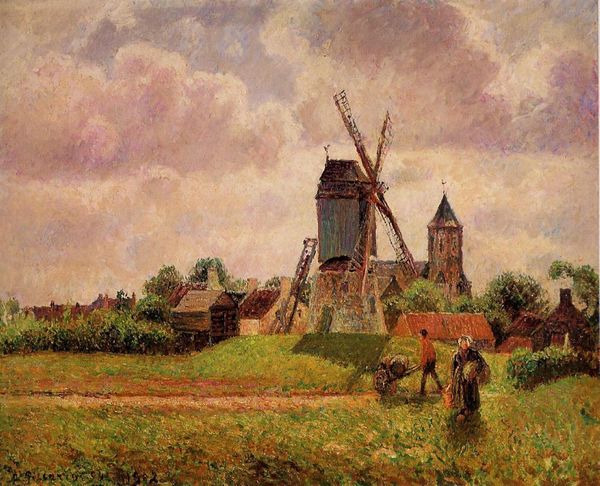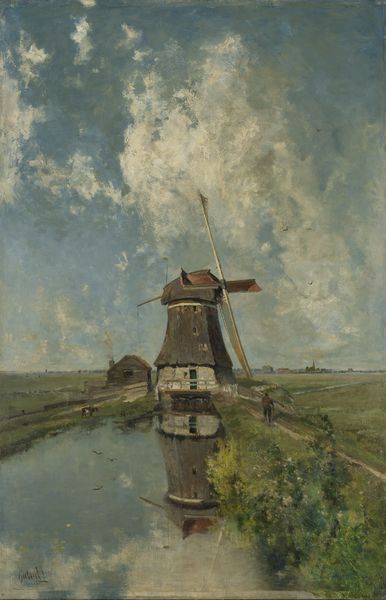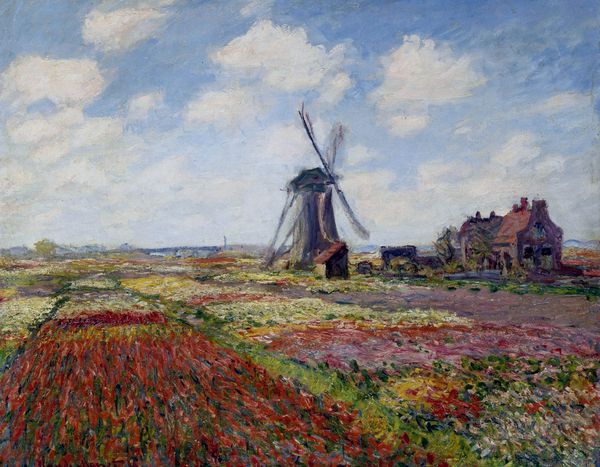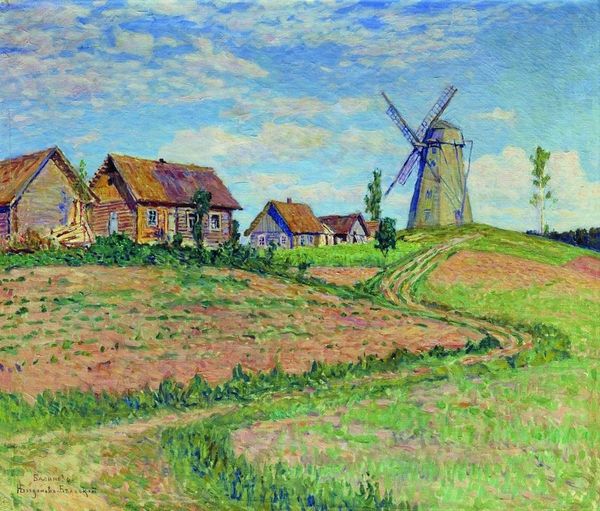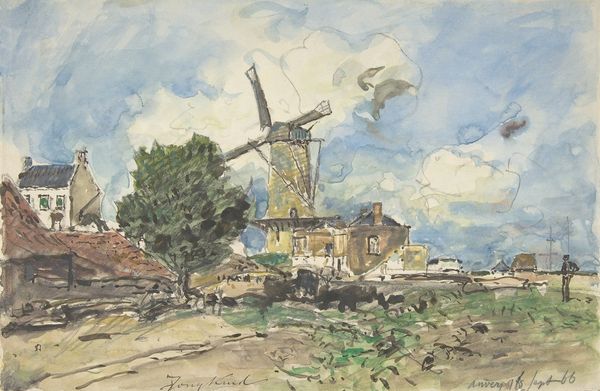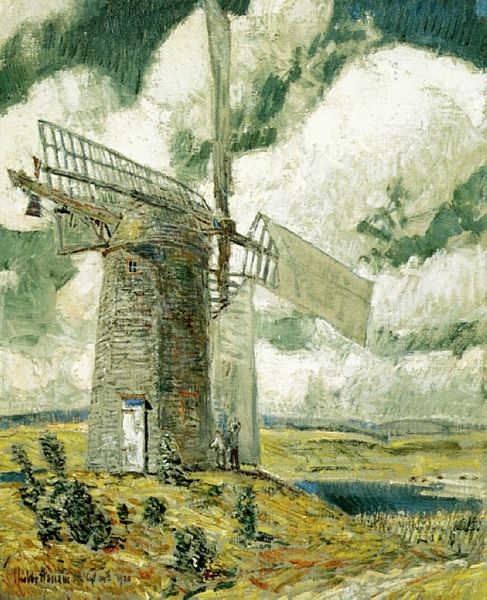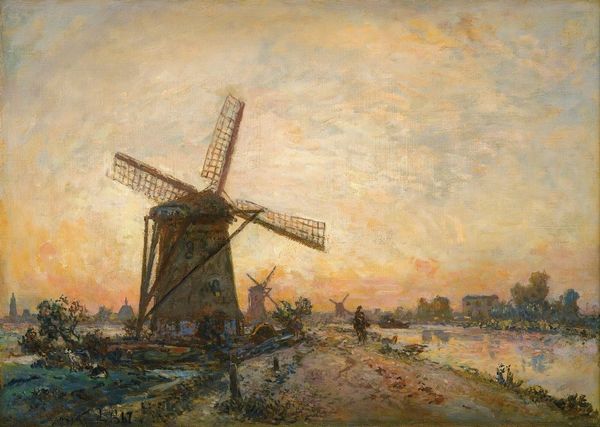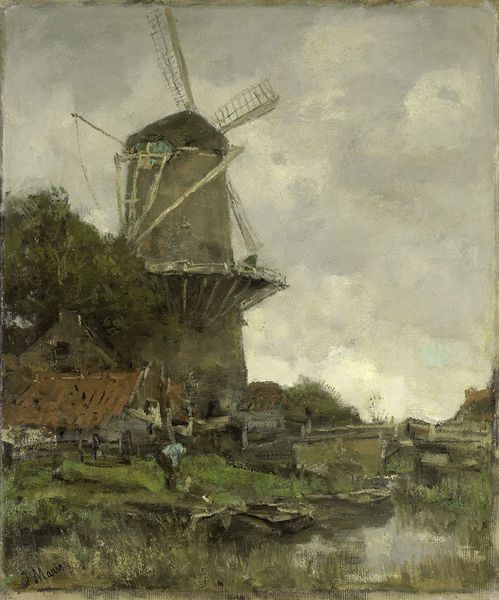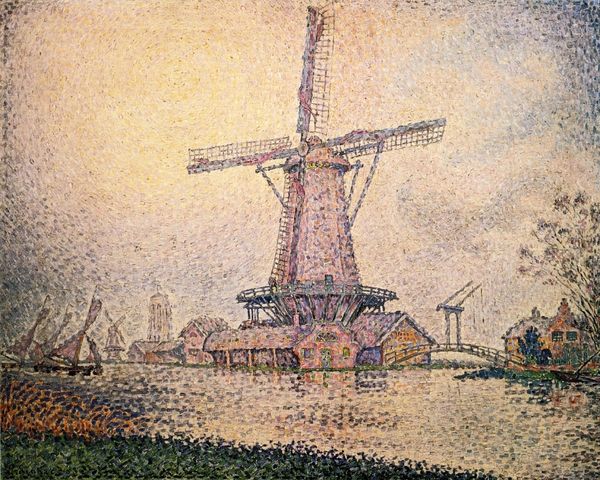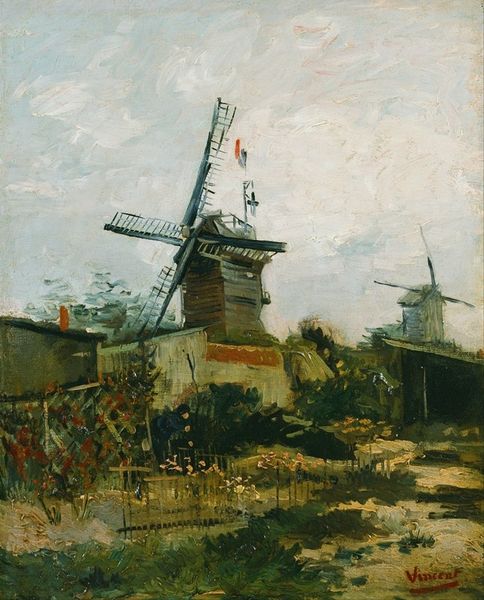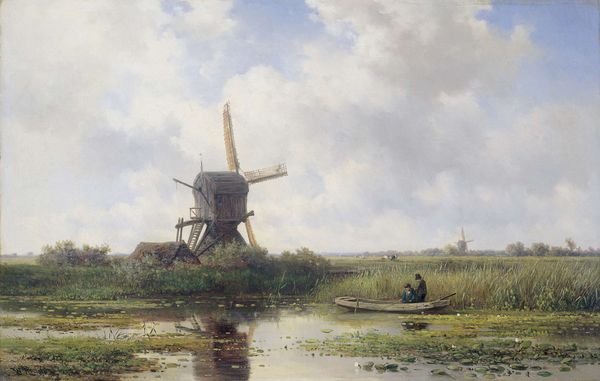
Copyright: Public Domain: Artvee
Curator: Here we have Maximilien Luce’s “Environs de Rotterdam,” an oil painting from 1907. Luce, a key figure in the Neo-Impressionist movement, captured this Dutch landscape with his signature pointillist technique. Editor: It's unexpectedly serene, isn’t it? There's a stillness about the light, despite all those visible brushstrokes. The windmills, usually symbols of industry, feel almost decorative here. Curator: Right, the landscape as an aesthetic object. Luce often depicted industrial scenes, reflecting the changing social landscape, but he infused them with an undeniable aesthetic sensibility. Look at the composition: the windmills punctuate the horizon, remnants of a pre-industrial age now existing alongside symbols of changing times. Editor: Absolutely, and those windmills also feel incredibly gendered to me. The long tradition of their use speaks to an almost pastoral history, romanticized and made delicate with this shimmering technique. It feels like Luce is subtly acknowledging this transition of labor through this specific lens. Curator: He certainly documents it. His Neo-Impressionist approach involved separating colors into individual dots, meant to blend optically when viewed from a distance. In “Environs de Rotterdam”, we can see this at play, notice how it creates this luminous, almost hazy atmosphere over the industrial landscape. Editor: Which gives the image its dreamy quality, I think. It almost softens the implications of labor practices by romanticizing what's lost in the process. I find myself pondering the communities and class structures that once were upheld and made vibrant by the windmills, not only aesthetically. Curator: Well, that is one important perspective, yes. For Luce and his contemporaries, these scenes held a powerful fascination, both visually and as representations of modernity’s impact. I would also say the painting represents Luce’s active interest in documenting shifts in the sociopolitical spheres, at this period. Editor: That might also explain this simultaneous nostalgia and subdued industrial celebration here, a portrait not only of space but also of change and the cultural baggage carried with it. Thank you for bringing all of this into our present, helping us explore the image beyond its immediate aesthetic appeal. Curator: Thank you. Examining artwork, specifically from within a socio-historical framework is always an exercise in broadening one's perspectives on reality, whether contemporary or historical.
Comments
No comments
Be the first to comment and join the conversation on the ultimate creative platform.
